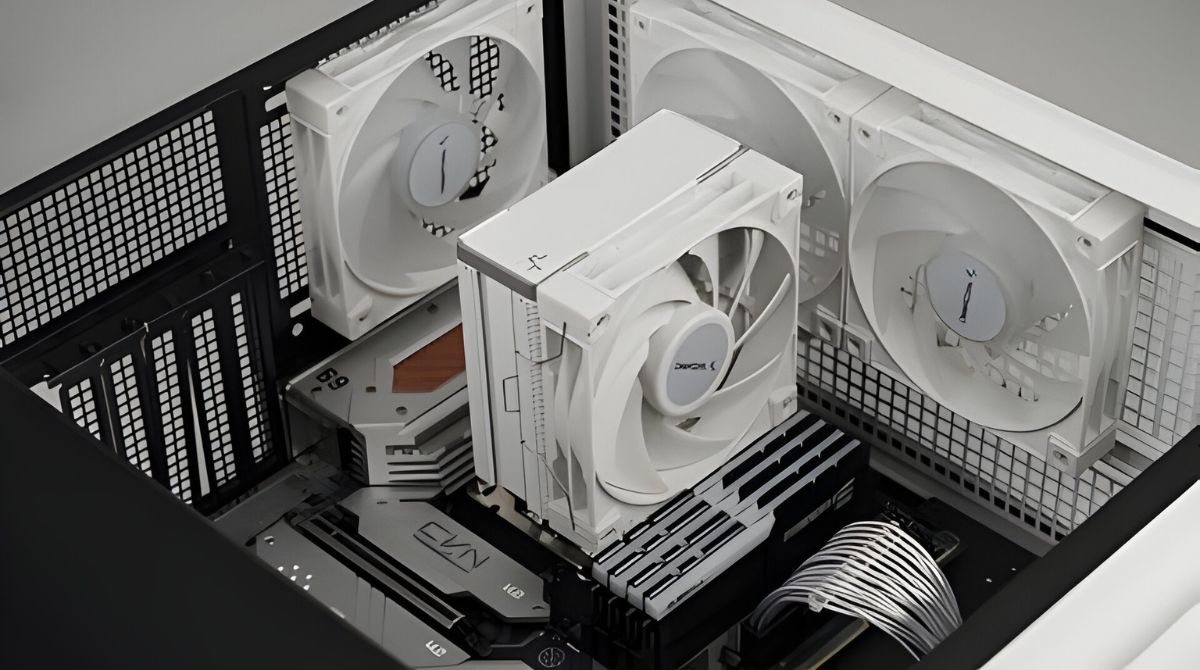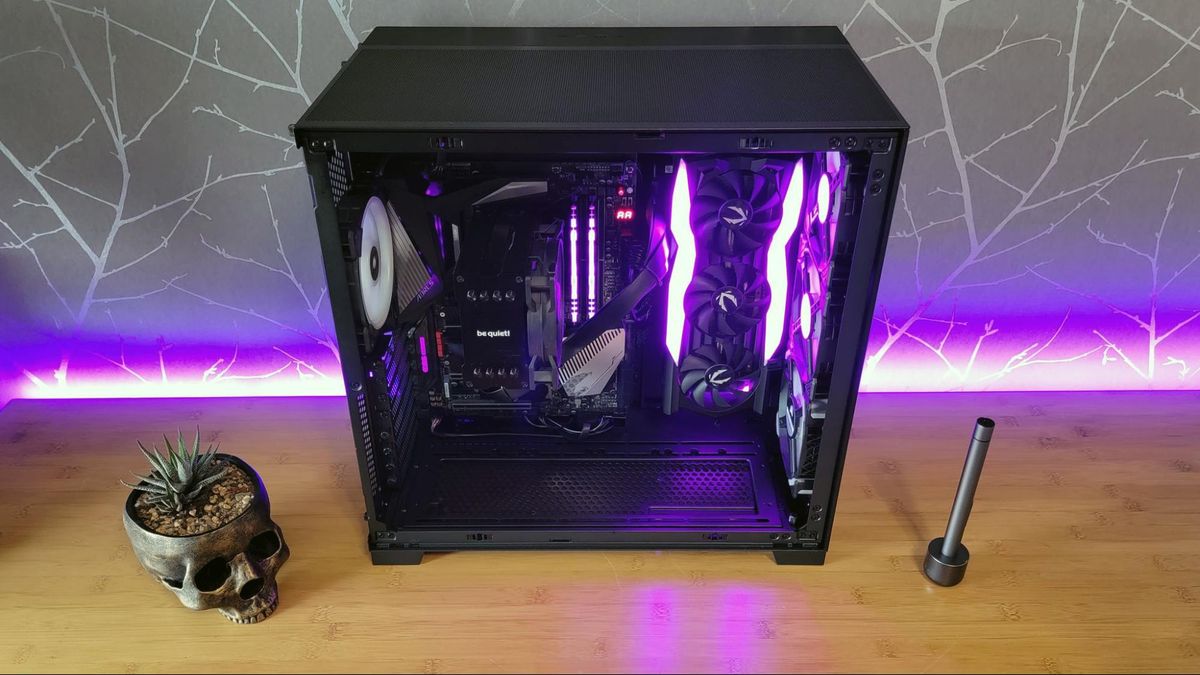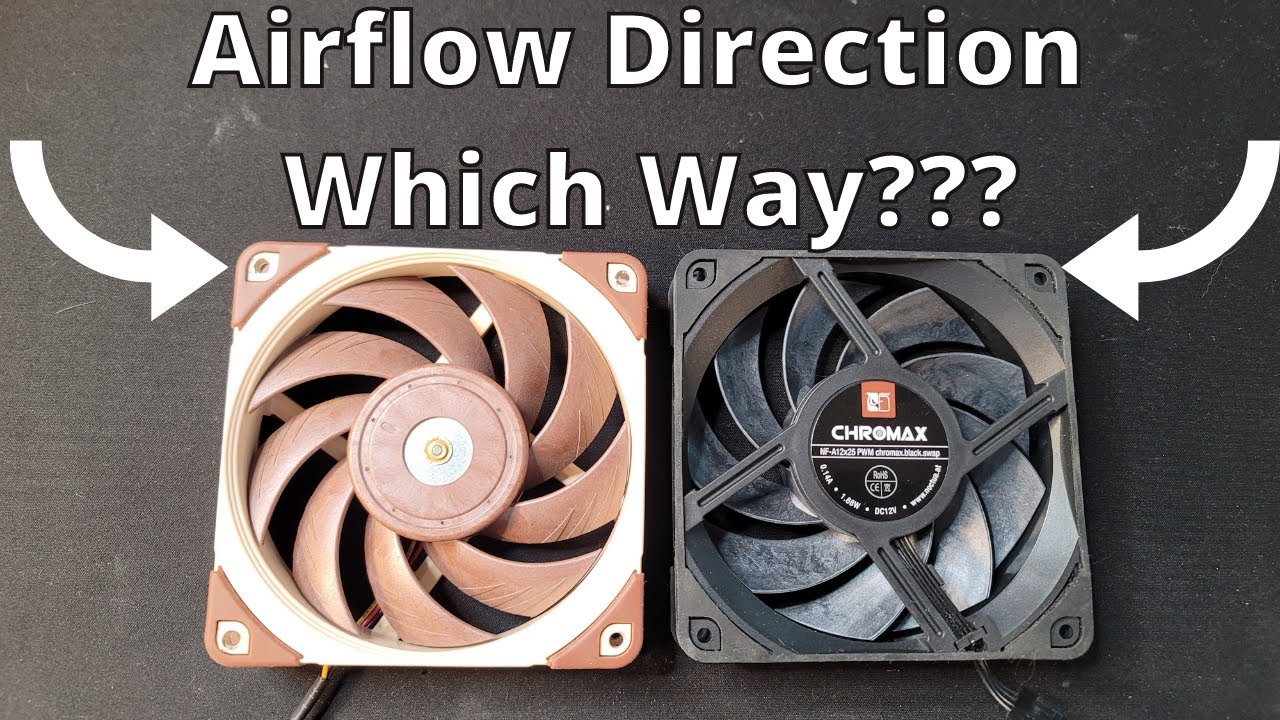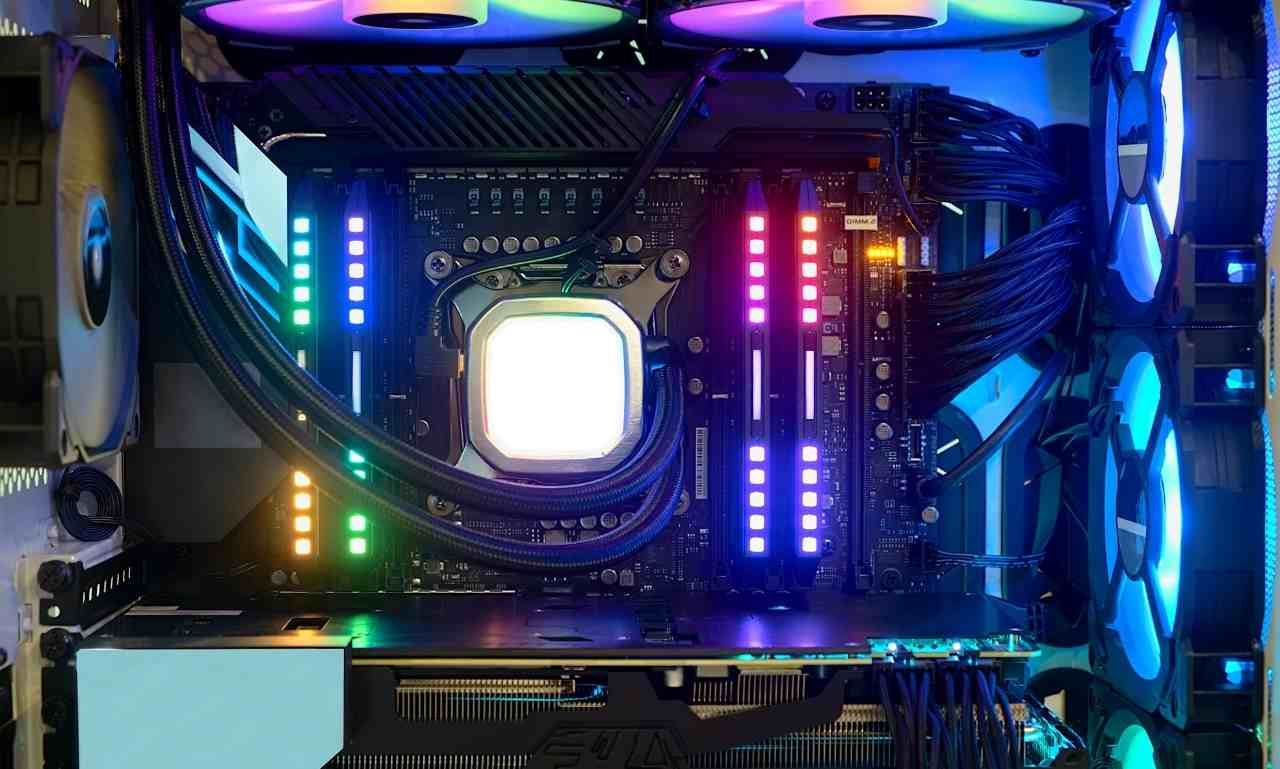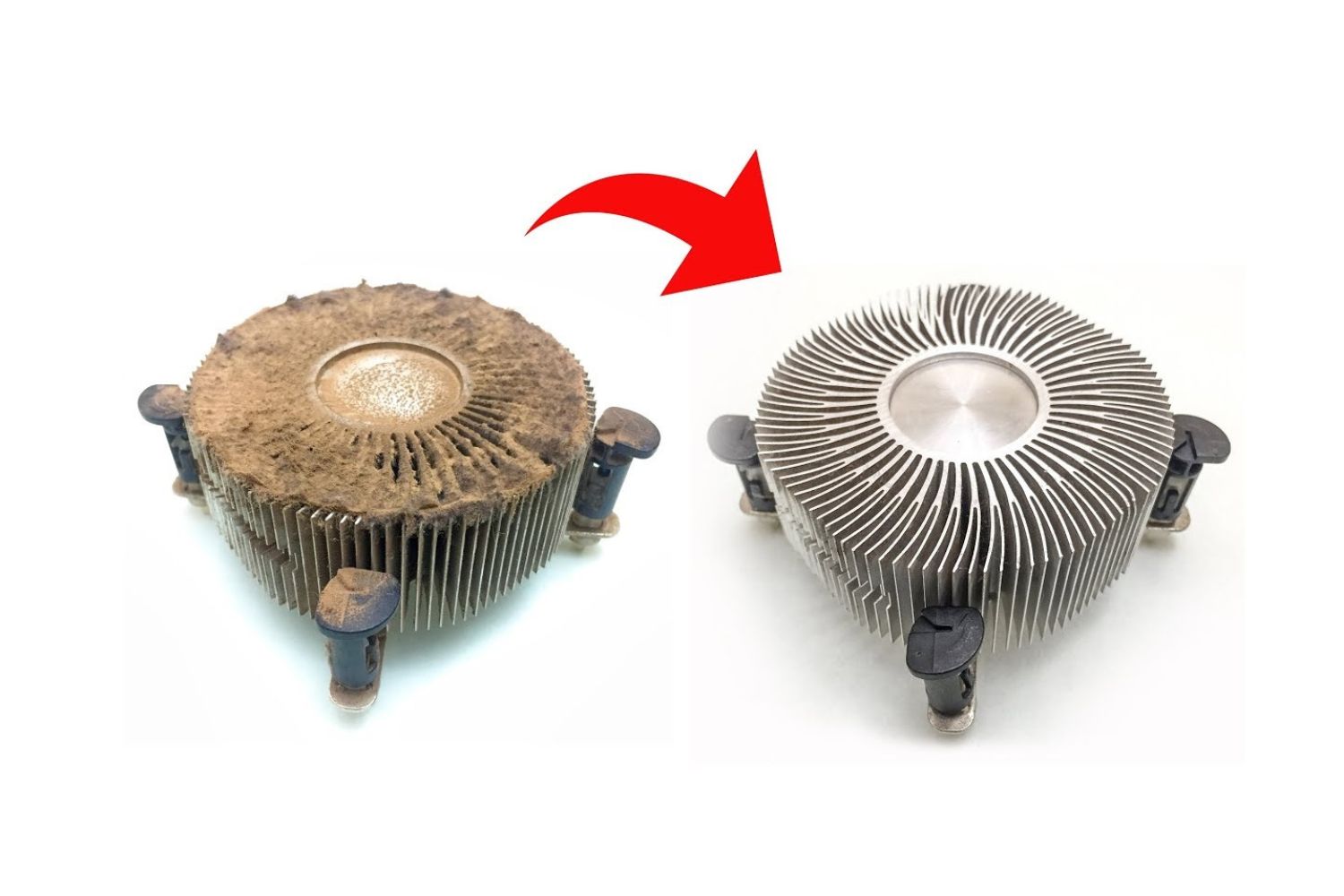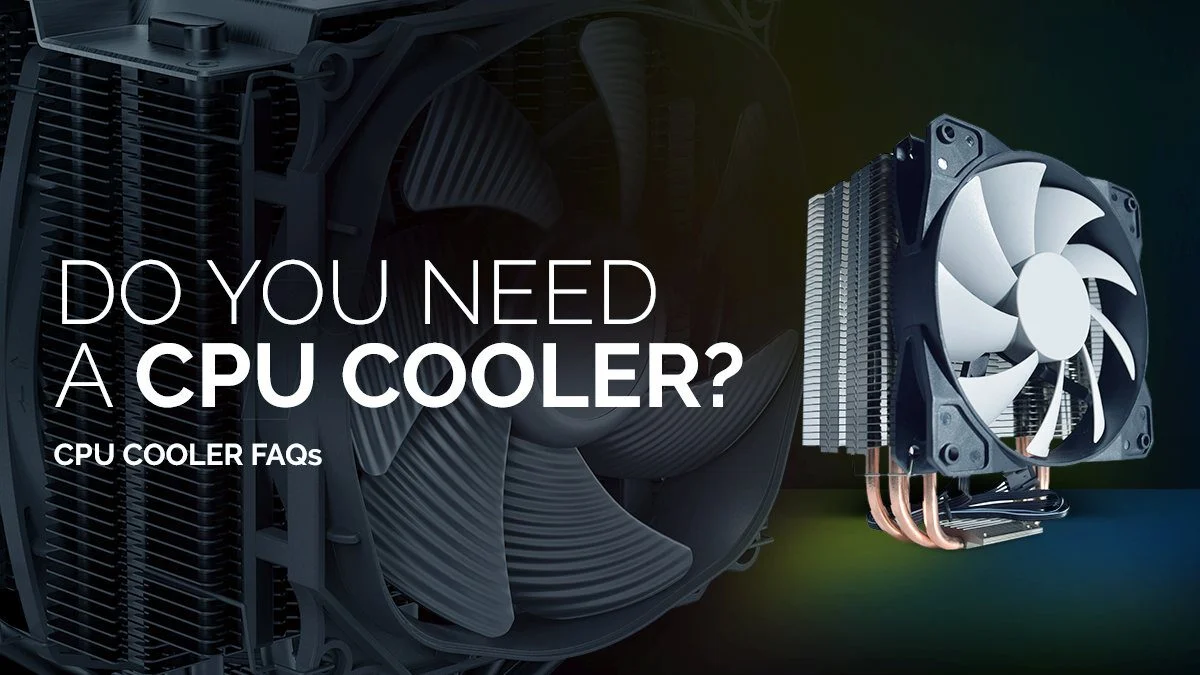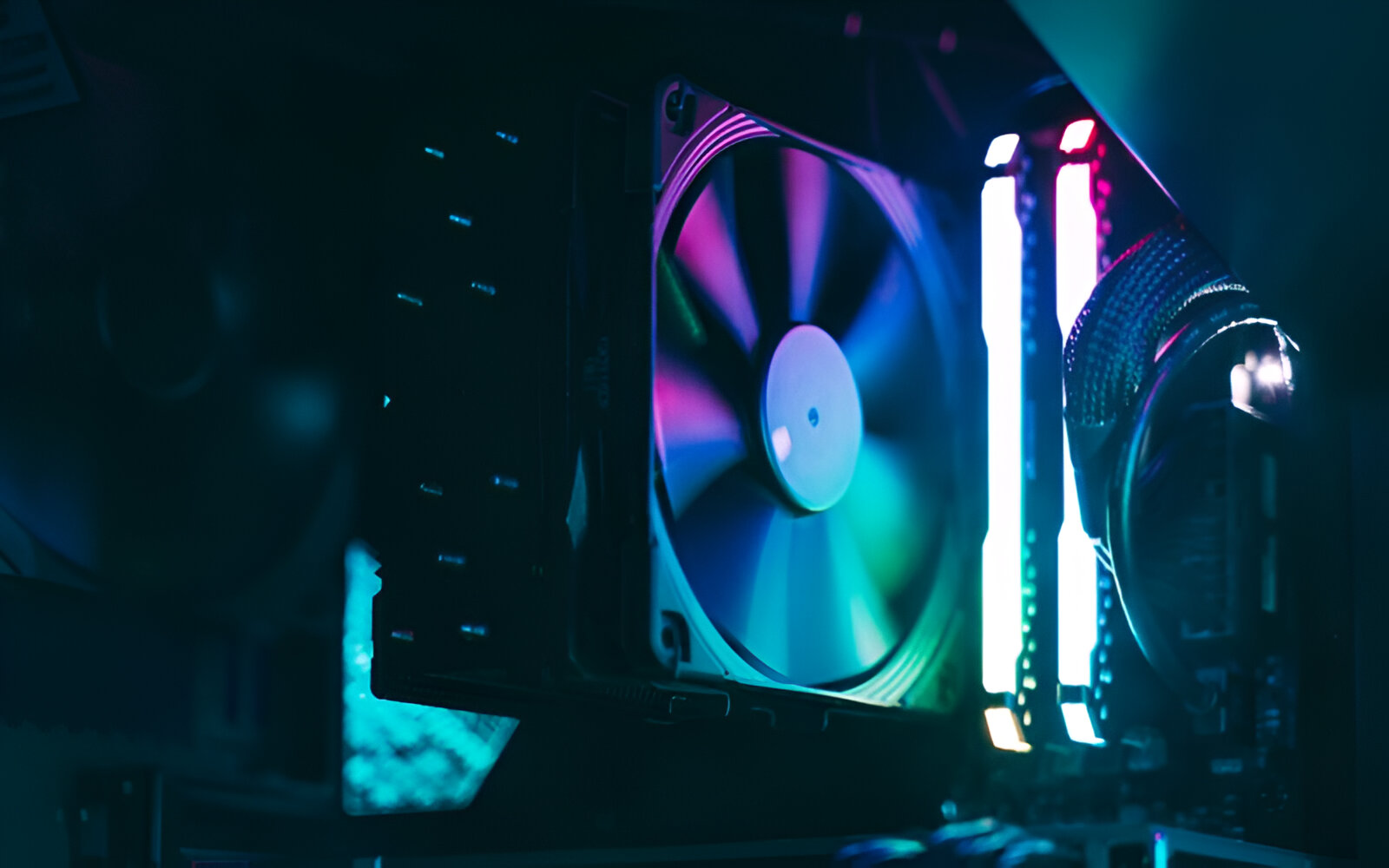Introduction
Welcome to the world of CPU cooling! When it comes to keeping your computer running smoothly, one of the most crucial components to consider is the CPU cooler. As your computer works tirelessly to process data and perform tasks, the CPU generates heat, which can potentially damage the internal components and slow down performance.
CPU cooling is essential for maintaining optimal temperature levels and ensuring the longevity of your computer. Without proper cooling, your CPU can overheat, leading to system instability, crashes, and even permanent damage. This is why investing in a high-quality CPU cooler and understanding its proper orientation is vital for any computer enthusiast or gamer.
But which way should the CPU cooler blow? Should it blow towards the back, top, front, or bottom of the case? The answer to this question depends on various factors, including the layout of your case, the position of other cooling components, and personal preference.
In this article, we’ll explore the different directions in which a CPU cooler can blow, along with the benefits and considerations of each orientation. Understanding these options will help you make an informed decision when setting up your CPU cooler for optimal cooling efficiency and performance.
So, let’s dive in and discover the various directions and implications of airflow in CPU cooling. Keep in mind that there is no one-size-fits-all answer, but by the end of this article, you’ll have a better understanding of which direction may work best for your specific setup.
Importance of CPU Cooling
Effective CPU cooling plays a crucial role in maintaining the stability and performance of your computer. As the brain of your system, the CPU generates a significant amount of heat while carrying out complex calculations and processes. Without proper cooling mechanisms in place, this heat can accumulate and reach dangerous levels, potentially leading to hardware failures and a decline in overall system performance.
One of the primary reasons for investing in a reliable CPU cooler is to dissipate heat efficiently. By using various cooling methods such as air or liquid cooling, the CPU cooler helps transfer the heat away from the CPU and towards the surrounding environment.
A properly cooled CPU not only prevents overheating but also allows the CPU to operate at its optimal temperature range. This ensures that the computer maintains its performance levels, especially during demanding tasks such as gaming or video editing.
In addition to keeping the CPU cool, a high-quality CPU cooler can also help reduce the noise level of your system. Overheating components tend to trigger the system’s fans to work harder and produce more noise. By efficiently cooling the CPU, you can keep the overall system temperature down and minimize fan speeds, resulting in a quieter computing experience.
Moreover, CPU cooling is essential for preserving the lifespan of your computer’s internal components. Continuous exposure to high temperatures can significantly shorten the lifespan of sensitive hardware such as the motherboard, graphics card, and RAM modules. By investing in an effective CPU cooling solution, you can ensure that these components stay within safe temperature limits, reducing the risk of premature failure.
Whether you are a casual user or a hardcore gamer, CPU cooling is a critical aspect of maintaining the overall health and performance of your computer. It provides the necessary protection against heat-related issues, extends the lifespan of your system, and ensures that you can enjoy a stable and reliable computing experience.
Now that we understand the importance of CPU cooling, let’s explore the different directions in which you can set up your CPU cooler to optimize airflow and cooling efficiency. Remember, choosing the right direction depends on various factors, and it’s essential to consider your specific case layout and cooling requirements.
Direction of Airflow
The direction in which your CPU cooler blows air can have a significant impact on overall cooling performance. Choosing the appropriate direction depends on the layout of your case, the orientation of other cooling components, and the specific needs of your system.
Let’s take a look at the four primary directions of airflow and their implications:
Blowing Towards the Back of the Case
One common configuration is to have the CPU cooler blowing air towards the back of the case. This setup takes advantage of the natural airflow pattern within most cases, where cool air is drawn in from the front and expelled out through the rear. By aligning the CPU cooler with this airflow direction, you can enhance the expulsion of hot air from the case, maintaining lower overall temperatures.
This direction of airflow is particularly beneficial if your case has a rear exhaust fan positioned near the CPU cooler. The fan can work in tandem with the CPU cooler to expel hot air quickly, preventing it from recirculating and potentially affecting the performance of other components.
Blowing Towards the Top of the Case
In cases where you have a top-mounted exhaust fan or radiator, it may be advantageous to orient the CPU cooler to blow air towards the top. This setup creates a vertical airflow pattern, where cool air is drawn in from the front or bottom and expelled upwards through the top. It is especially useful for cases with restricted front airflow or limited clearance at the back.
Blowing air towards the top of the case allows hot air to rise naturally, aiding in its efficient removal. It also helps prevent heat buildup around the CPU area, reducing the risk of thermal throttling and improving overall cooling performance.
Blowing Towards the Front of the Case
In some cases, particularly with high-end CPUs or in scenarios where the GPU generates a significant amount of heat, blowing air towards the front of the case can provide better cooling results. This configuration allows fresh, cool air to be directed towards the CPU heatsink directly, keeping the temperatures in check.
However, it’s crucial to ensure that sufficient airflow is maintained within the case to prevent the GPU from overheating. In such setups, it’s common to have additional front intake fans or a side-mounted fan to supply fresh air to the GPU area.
Blowing Towards the Bottom of the Case
Some PC cases, particularly those designed for optimal cooling, feature a bottom-mounted power supply unit (PSU) with a dedicated vent. In such cases, it may be effective to configure the CPU cooler to blow air towards the bottom.
By doing so, the CPU cooler can help draw cool air from the bottom of the case, ensuring a steady supply of fresh air for efficient cooling. This setup is especially beneficial if the bottom area is unobstructed and allows for smooth air intake.
Remember, the optimal direction of airflow depends on the design of your case, placement of other cooling components, and the specific requirements of your system. It’s crucial to consider these factors along with your cooling goals when configuring your CPU cooler.
Now that we’ve explored the different directions in which your CPU cooler can blow air, let’s discuss other factors to consider for effective CPU cooling.
Blowing Towards the Back of the Case
One popular configuration for CPU coolers is to have them blow air towards the back of the case. This setup aligns with the natural airflow pattern found in most cases, where cool air is drawn in from the front and expelled out through the rear. Let’s explore the benefits and considerations of this orientation:
Benefits:
1. Expulsion of hot air: By orienting the CPU cooler to blow air towards the back, you can take advantage of the case’s rear exhaust fan. This fan, typically positioned near the CPU cooler, helps expel hot air from the case quickly. Working in tandem, the CPU cooler and rear exhaust fan create a strong airflow path for efficient heat dissipation.
2. Lower overall temperatures: By aligning the CPU cooler with the natural airflow direction, hot air is expelled directly out of the case. This prevents it from recirculating and potentially affecting the performance of other components. As a result, the overall temperature of the case is lowered, improving thermal efficiency and system stability.
3. Enhanced cooling performance: Blowing air towards the back of the case helps maintain a constant flow of cool air towards the CPU heatsink. This continuous supply of fresh air facilitates effective heat transfer, allowing the CPU cooler to efficiently dissipate heat and keep temperatures within safe limits. It is particularly beneficial for systems under heavy load or during intense gaming sessions.
Considerations:
1. Case layout: Not all cases have a rear exhaust fan, which is vital for optimal airflow in this configuration. Ensure that your case is equipped with a rear fan or an available mounting location for one before choosing this orientation. Without proper exhaust, the benefits of blowing towards the back of the case may be diminished.
2. Restricted airflow: If your case has limited front intake or obstructed airflow paths, the effectiveness of blowing towards the back may be reduced. Insufficient fresh air intake can impact cooling efficiency, leading to higher CPU temperatures. In such cases, consider adding additional front intake fans or optimizing the case’s overall airflow to ensure adequate cooling.
3. Clearance issues: Some CPU coolers, especially those with bulky heatsinks or large fans, may have clearance issues when blowing air towards the back. Ensure that the distance between the CPU cooler and other components, such as the RAM modules or graphics card, is sufficient to avoid interference. It’s important to strike a balance between efficient cooling and proper component clearance.
Blowing air towards the back of the case is a popular choice for many computer enthusiasts due to its efficient heat dissipation and compatibility with standard case configurations. However, it’s essential to consider the specific layout of your case, the availability of rear exhaust fan(s), and any potential clearance issues before choosing this orientation for your CPU cooler.
Now that we’ve discussed blowing towards the back, let’s explore another popular direction: blowing towards the top of the case.
Blowing Towards the Top of the Case
Another common configuration for CPU coolers is to have them blow air towards the top of the case. This setup is particularly useful when your case has a top-mounted exhaust fan or radiator. Let’s explore the benefits and considerations of blowing air towards the top:
Benefits:
1. Vertical airflow pattern: Blowing air towards the top creates a vertical airflow pattern within the case. This setup takes advantage of the natural tendency of hot air to rise, allowing it to be expelled efficiently through the top-mounted exhaust fan or radiator. This vertical airflow pattern helps prevent heat buildup around the CPU area, promoting better cooling performance.
2. Clearance from other components: By blowing air towards the top, you can create more clearance for other components, such as the graphics card or RAM modules. This can be beneficial if your CPU cooler has a larger heatsink or fan, as it reduces the risk of interference and ensures proper airflow to other crucial components.
3. Improved overall cooling: Blowing air towards the top can help create a balanced airflow within the case, ensuring that cool air is drawn in from the front or bottom and expelled upward through the top exhaust. This consistent airflow helps maintain lower temperatures throughout the case and provides proper cooling to the CPU and other components.
Considerations:
1. Case design and fan configuration: To benefit from blowing towards the top, your case must have a top-mounted exhaust fan or radiator. Additionally, consider the placement and configuration of other fans in your system. It’s important to ensure that the fans are properly aligned to create a well-coordinated airflow path, maximizing the effectiveness of blowing towards the top.
2. Restricted front airflow: If your case has a restricted front intake or limited airflow from the front, blowing towards the top might result in insufficient fresh air being drawn in. In such cases, consider adding additional front intake fans or optimizing the overall case airflow to ensure a steady supply of cool air for the CPU cooler.
3. Clearance above the case: When blowing towards the top, ensure that there is sufficient clearance above the case to allow the expelled hot air to dissipate properly. If the case is placed in a confined space or enclosed cabinet, the expelled hot air may recirculate back into the system, potentially affecting the cooling performance.
Blowing air towards the top of the case can provide efficient cooling while maintaining proper clearance for other components. It works well in cases with top-mounted exhaust fans or radiators, creating a vertical airflow pattern for improved heat dissipation. However, ensure that your case allows for proper airflow intake and has sufficient clearance above it to maximize the benefits of this orientation.
Now that we’ve explored blowing towards the top, let’s move on to another direction: blowing towards the front of the case.
Blowing Towards the Front of the Case
Blowing air towards the front of the case is a popular configuration for CPU coolers, especially in scenarios where the CPU or GPU generates a significant amount of heat. Let’s explore the benefits and considerations of this orientation:
Benefits:
1. Direct cooling for the CPU: By blowing air towards the front, the CPU cooler can provide a direct stream of cool air to the CPU heatsink. This helps maintain lower temperatures and optimizes the cooling efficiency of the CPU. It is particularly beneficial for high-end CPUs that require efficient cooling during intensive tasks such as gaming or video editing.
2. Enhanced cooling for the GPU: In systems where the graphics card (GPU) generates substantial heat, blowing air towards the front can help ensure better cooling for the GPU area. The cool air supplied by the front intake fans directly reaches the graphics card, minimizing the risk of thermal throttling and improving overall GPU performance.
3. Balanced airflow: When blowing towards the front, the CPU cooler can assist in creating a balanced airflow pattern within the case. The front intake fans draw in fresh cool air, which is then circulated throughout the case to effectively cool other components. This helps maintain consistent temperatures throughout the entire system and promotes overall cooling performance.
Considerations:
1. Additional intake fans: Blowing air towards the front requires sufficient intake airflow to maintain optimal cooling. Consider adding additional intake fans or optimizing the front fan configuration to provide a steady supply of cool air for both the CPU cooler and other components in the system.
2. Clearance for components: When blowing towards the front, consider the clearance between the CPU cooler and other components such as RAM modules and the graphics card. Ensure that there is enough space to avoid interference and to promote proper airflow throughout the system. It may be necessary to choose a CPU cooler with a low-profile design to accommodate any space restrictions.
3. GPU cooling: While blowing towards the front benefits the CPU, ensure that sufficient cooling measures are in place for the GPU. The front intake fans should provide enough airflow to cool the graphics card adequately. Consider the placement and configuration of additional fans, such as side or bottom intake fans, to improve GPU cooling if necessary.
Blowing air towards the front of the case can provide direct cooling for the CPU and improved airflow for the GPU. It promotes efficient cooling for both components and helps maintain balanced temperatures throughout the system. However, ensure that sufficient airflow is provided, clearance is maintained, and additional cooling measures are in place for optimal cooling performance.
Now that we’ve covered blowing towards the front, let’s move on to another orientation: blowing towards the bottom of the case.
Blowing Towards the Bottom of the Case
Blowing air towards the bottom of the case is a less common configuration for CPU coolers but can be beneficial in certain scenarios. Let’s explore the benefits and considerations of this orientation:
Benefits:
1. Fresh air intake: When blowing air towards the bottom, the CPU cooler can draw in cool air from the bottom of the case. This setup takes advantage of the natural tendency of cool air to settle at the lower part of the case. The fresh air supply ensures that the CPU cooler has a steady source of cool air for efficient heat dissipation.
2. Improved overall airflow: Blowing air towards the bottom can help create a more balanced airflow within the case. The cool air drawn in from the bottom is circulated throughout the case, providing cooling to other components as well. This helps maintain lower temperatures and promotes more efficient cooling for the entire system.
3. Clearance for other components: By blowing air towards the bottom, you can create more clearance for other components, especially if the CPU cooler has a bulky heatsink or large fan. This allows for better airflow around other crucial components, preventing heat buildup and potential performance issues.
Considerations:
1. Case design: Blowing air towards the bottom requires a case with proper ventilation and an unobstructed bottom area. Ensure that your case has a sufficient number of bottom intake vents or an available mounting location for a bottom intake fan. Without enough airflow from the bottom, the benefits of this orientation may be limited.
2. Dust accumulation: Since the bottom of the case is closer to the floor, blowing air towards the bottom can result in increased dust accumulation. It’s essential to regularly clean the bottom intake vents and consider using dust filters to prevent dust from entering the system and clogging the CPU cooler or other components.
3. Elevated case placement: Blowing air towards the bottom works best when the case is elevated from the floor to ensure proper air intake. Placing the case on a raised platform or using case feet can help create sufficient clearance and avoid obstructing the bottom intake vents.
Blowing air towards the bottom of the case can provide a fresh supply of cool air for the CPU cooler and promote overall airflow within the case. It offers improved cooling performance and clearance for other components. However, ensure that your case supports bottom intake vents, manage dust accumulation, and elevate your case if necessary for optimal cooling benefits.
Now that we’ve explored blowing towards the bottom, let’s move on to considerations and factors beyond the direction of airflow for effective CPU cooling.
Other Factors to Consider
While the direction of airflow plays a significant role in CPU cooling, several other factors should be considered to ensure optimal cooling performance. Let’s explore these factors:
Case Layout and Fan Configuration:
The layout and design of your case, along with the fan configuration, can greatly influence cooling efficiency. It’s important to choose a case with adequate space, proper ventilation, and well-placed mounting locations for fans. A good fan configuration includes a combination of intake and exhaust fans strategically positioned to create a balanced airflow path and ensure efficient heat dissipation.
CPU Cooler Size and Compatibility:
When selecting a CPU cooler, consider its size and compatibility with your case and other components. Ensure that the CPU cooler fits within the clearance limitations of your case and does not obstruct other components like RAM modules or the graphics card. Choosing a cooler with the right dimensions will prevent compatibility issues and allow for proper airflow within the system.
Thermal Paste and Correct Installation:
The correct application of thermal paste is crucial for efficient heat transfer between the CPU and the cooler. Using a high-quality thermal paste and applying it correctly helps fill microscopic gaps, ensuring maximum contact and heat dissipation. Additionally, ensure that the CPU cooler is securely and correctly installed, providing sufficient contact with the CPU for optimal cooling performance.
System Fans and Airflow Optimization:
In addition to the CPU cooler, consider the placement and configuration of other system fans. Ensure that the overall airflow within the case is optimized, ensuring a consistent and well-distributed flow of cool air. Good cable management also helps improve airflow and prevents cables from obstructing the movement of air within the case.
CPU and Cooling System Monitoring:
Keeping an eye on CPU temperatures and monitoring the performance of your cooling system is important to ensure that it is functioning optimally. Use software tools or hardware monitors to regularly check the temperatures and ensure that they are within safe limits. This allows you to identify any potential issues or deviations and take appropriate action before they cause severe damage to the system.
By considering these additional factors, you can enhance the overall cooling capability of your system and maintain optimal temperatures for your CPU and other components.
Now that we’ve discussed the various factors to consider for effective CPU cooling, let’s summarize the key points and recommendations for finding the right CPU cooler setup for your system.
Conclusion
CPU cooling is a crucial aspect of maintaining the stability, performance, and longevity of your computer. Understanding the direction of airflow and choosing the appropriate setup for your CPU cooler is essential for effective cooling. Depending on your case’s layout, the position of other cooling components, and your specific cooling requirements, you can configure your CPU cooler to blow air towards the back, top, front, or bottom of the case.
Blowing air towards the back of the case aligns with the natural airflow pattern in most cases and promotes efficient heat dissipation. Blowing towards the top of the case takes advantage of the natural tendency of hot air to rise and enhances overall cooling performance. Blowing towards the front provides direct cooling for the CPU and improves airflow for the GPU. Blowing towards the bottom draws in fresh air from the bottom of the case, promoting balanced airflow and cooling efficiency.
In addition to the direction of airflow, consider other factors such as case layout, fan configuration, CPU cooler size, thermal paste application, system fan placement, and monitoring temperatures. These factors can significantly impact cooling performance and help maintain optimal temperatures for your CPU and other components.
Remember to choose a CPU cooler that is compatible with your case and other components, apply thermal paste correctly, and regularly monitor temperatures to ensure the cooling system operates optimally.
By carefully considering these factors, you can create an efficient and effective cooling setup for your CPU, ensuring the stability and performance of your computer. So, go ahead, choose the right direction of airflow for your CPU cooler, and enjoy a cool and reliable computing experience.







